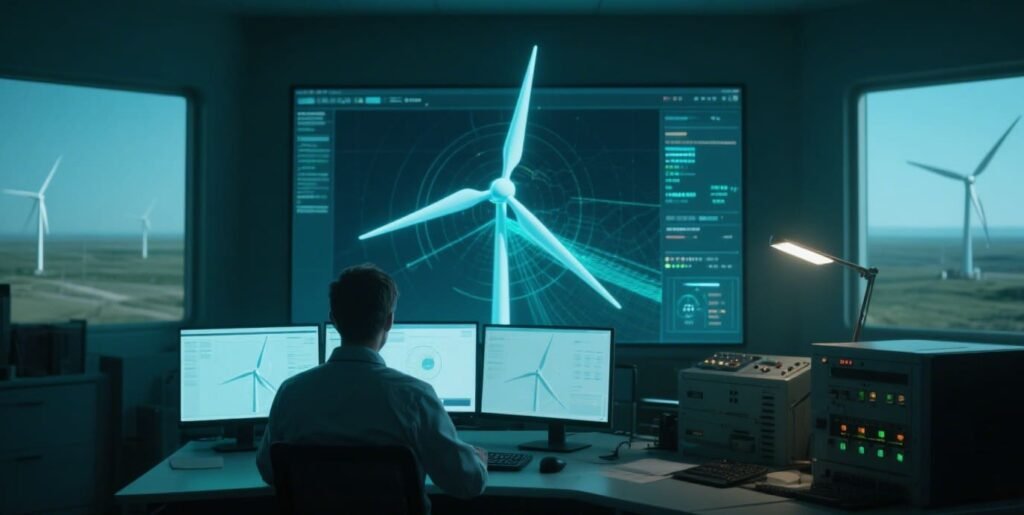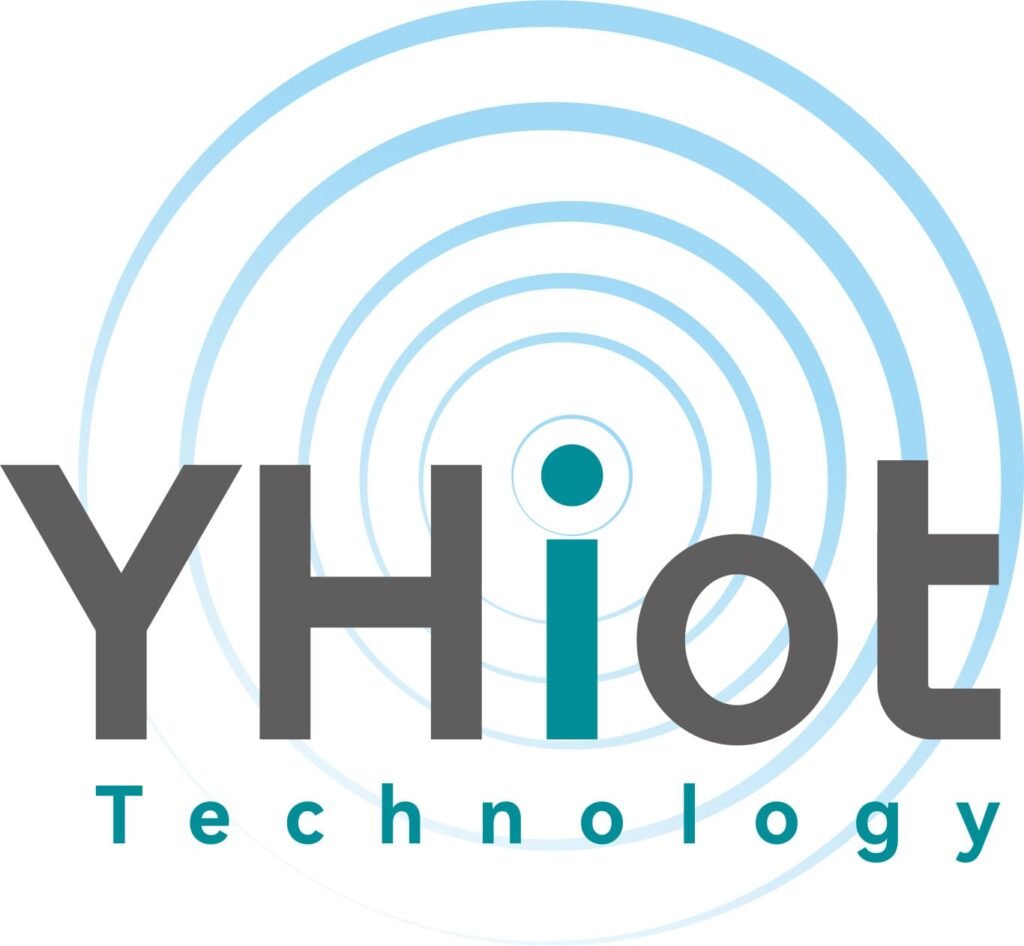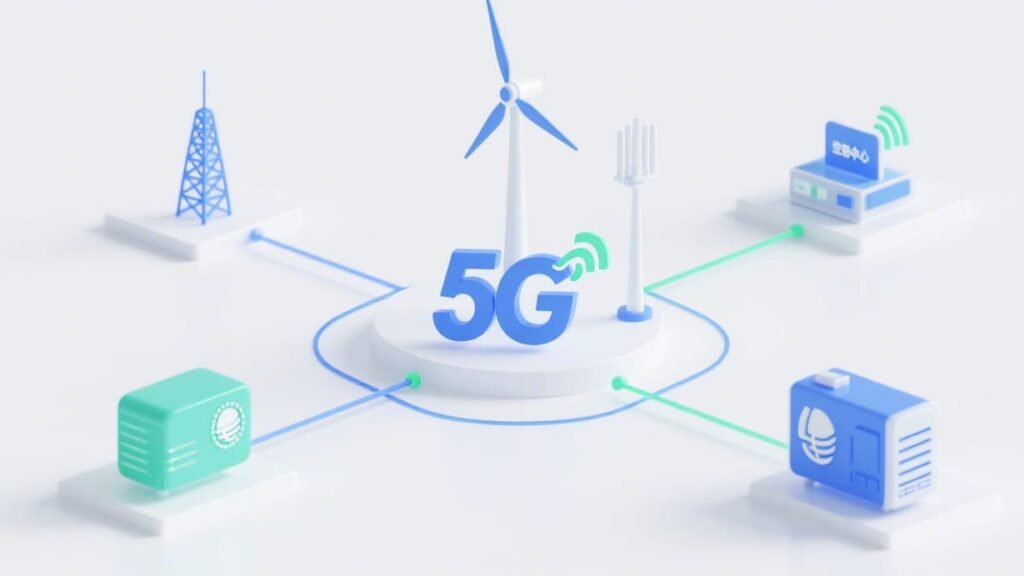How 5G trubo-charge wind energy?
In recent years, the integration of 5G technology into wind turbine operations has emerged as a revolutionary force, significantly enhancing the efficiency, reliability, and sustainability of wind energy production. As the world increasingly shifts towards renewable energy sources, 5G’s unique features such as high-speed connectivity, ultra-low latency, and massive device support have proven indispensable for optimizing wind turbine performance and ensuring seamless operation within wind farms.

One of the primary applications of 5G in wind turbines is real-time monitoring and control. Wind turbines are equipped with a multitude of sensors that collect data on various parameters, including wind speed, blade rotation, temperature, and vibration. Traditional communication networks often struggle to transmit this vast amount of data in real-time, leading to potential delays in detecting and addressing operational issues. 5G’s high bandwidth allows for the instantaneous transfer of large volumes of sensor data from turbines to control centers. Operators can then monitor the status of each turbine in real-time, promptly identifying anomalies and making necessary adjustments to maximize power generation and prevent equipment failures. For instance, if a sensor detects abnormal vibrations in a turbine’s blades, 5G enables immediate transmission of this critical information, allowing technicians to initiate maintenance procedures without delay.
Predictive maintenance is another crucial area where 5G plays a vital role. By leveraging the capabilities of 5G and the Internet of Things (IoT), wind turbine operators can collect and analyze data continuously. Machine learning algorithms, fueled by real-time data from 5G-connected sensors, can predict potential component failures before they occur. This proactive approach to maintenance significantly reduces downtime, as technicians can schedule repairs during planned outages rather than reacting to unexpected breakdowns. For example, by analyzing the temperature and wear data of gearboxes in turbines, predictive models can estimate the remaining useful life of these components, enabling operators to order replacement parts and plan maintenance activities in advance. The cost savings associated with reduced downtime and optimized maintenance schedules are substantial, contributing to the overall economic viability of wind farms.
5G also facilitates intelligent inspection of wind turbines. Tethered drones equipped with high-resolution cameras and 5G modules can be deployed to inspect turbines. These drones can transmit live video feeds and inspection data back to the control center in real-time, allowing experts to assess the condition of turbines remotely. The high-speed and low-latency characteristics of 5G ensure that the inspection process is efficient and accurate. Advanced image recognition algorithms can analyze the video data to identify various defects, such as cracks in blades or corrosion on structural components. Compared to traditional manual inspections, which are time-consuming, labor-intensive, and potentially dangerous for workers, 5G-enabled drone inspections offer a safer, faster, and more comprehensive solution.
In the context of offshore wind farms, 5G’s capabilities are even more critical. Offshore turbines are exposed to harsh marine environments, and communication challenges are more pronounced due to the remote locations. 5G provides a reliable and robust communication infrastructure that enables seamless connectivity between offshore turbines and onshore control centers. The low latency of 5G ensures that operators can remotely control and manage turbines in real-time, making adjustments to optimize power generation based on changing wind conditions. Additionally, 5G supports the integration of autonomous systems in offshore wind farms, such as self-diagnosing turbines and automated maintenance robots, which can operate independently with minimal human intervention, further enhancing the efficiency and safety of offshore wind energy production.
Moreover, 5G technology enables better grid integration of wind energy. By providing real-time data on power output and turbine status, 5G allows grid operators to balance the supply and demand of electricity more effectively. Wind farms can communicate with the grid in real-time, adjusting their power generation based on grid requirements. This dynamic interaction helps to stabilize the electrical grid, reducing the impact of the intermittent nature of wind energy. For example, during periods of high demand, wind farms can increase their power output, while during low-demand periods or when grid stability is at risk, they can reduce generation accordingly.
Hierarchical Network Topology for 5G in Wind Power
1. Terminal Devices Layer (End Nodes)
- Wind Turbines
- Equipped with IoT sensors (vibration sensors, temperature sensors, speed sensors) for real-time data collection.
- Tethered Drones
- Used for intelligent inspection, equipped with 5G modules and cameras to capture turbine defects.
- Industrial Equipment
- Industrial 5G routers for secure data transmission from field devices.
2. Network Transmission Layer
- 5G Base Stations
- Provide high-bandwidth, low-latency wireless connectivity for data transmission from terminal devices.
- Multi-access Edge Computing (MEC) Platform
- Deployed at the edge of the network to process real-time data locally (e.g., inspection data, sensor data), reducing latency.
- Backhaul Network
- Connects 5G base stations to central data centers or cloud platforms via fiber optic cables.
3. Data Processing & Management Layer
- Cloud Data Center
- Stores and processes large volumes of historical data (wind speed, turbine performance, maintenance records).
- AI Analytics System
- Utilizes algorithms to analyze sensor data for predictive maintenance (e.g., defect identification, failure prediction).
- Monitoring & Control Platform
- Enables operators to remotely monitor turbine status and issue control commands.
4. Application Layer
- Real-time Monitoring & Control System
- Displays real-time data (wind speed, power generation) and allows remote adjustment of turbine operations.
- Predictive Maintenance System
- Generates maintenance alerts based on AI analysis of component wear and tear.
- Intelligent Inspection Platform
- Processes drone-collected images to identify 28+ types of defects via AI algorithms.
- Remote Operation Center
- Enables offshore wind farm maintenance personnel to control equipment via low-latency 5G connections.
Data Flow & Connections
- Wireless Connections (5G)
- Sensors → 5G Base Station → MEC Platform (real-time data transmission).
- Drones → 5G Base Station → AI Analytics System (inspection data).
- Wired Connections
- 5G Base Station → Backhaul Network → Cloud Data Center (historical data storage).
- MEC Platform → Monitoring & Control Platform (real-time control commands).
- Security Layer
- Industrial 5G Routers implement data encryption and access control between terminal devices and the network.
Topology Visualization Notes
- Represent each layer with distinct blocks (e.g., terminal devices in blue, network layer in green).
- Use arrows to indicate data flow direction (e.g., from sensors to MEC to cloud).
- Highlight 5G Base Stations and MEC as key nodes connecting terminal devices to the core network.
- Denote wireless links with dashed lines and wired links with solid lines for clarity.


